(1777-1815)
Studies of seated figures
Pen and ink on paper
18 x 14 cm
Provenance:
Private collection, France
(Currently on view during our pop-up exhibition from November 22 to 26, 2024, at 15 Rue de Marignan, 75008 Paris – just steps from the Grand Palais – more information available on our website.)
Giuseppe Bossi was an Italian Neoclassical painter, draughtsman, and writer, known for his drawings and for his significant role in the artistic circles of Milan. He was director of the Brera Academy of Fine Arts in Milan. He was highly influenced by classical antiquity, Renaissance art, and the work of Leonardo da Vinci and Raphael, whom he admired greatly. Bossi's artistic output includes not only paintings but also a substantial number of drawings, many of which were executed in pen and ink.
As a draughtsman, Bossi's pen and ink drawings demonstrate his fascination with line, form, and the classical ideals of beauty. He was deeply involved in the intellectual and cultural revival of Neoclassicism in Italy during the late 18th and early 19th centuries. Pen and ink were ideal mediums for Bossi to showcase his masterful line work. His drawings are characterized by clean, precise lines, with a careful attention to the contours of the human form. The linear clarity and control in his work reflect the influence of Raphael and the Renaissance masters, who were known for their mastery of draftsmanship.
In this sketch, Bossi explores human forms through two crouched figures, rendered with quick and fluid ink strokes. The drawing demonstrates his mastery of gesture and the simplicity with which he captures the bodily tension and introspection of the subjects. Despite the apparent spontaneity of the lines, each one seems thoughtfully placed to convey form, while maintaining an effortless execution. This pen and ink drawing features male figures, rendered with careful attention to musculature and proportion.
Like many Neoclassical artists, Bossi was deeply invested in the study of anatomy and the human figure. These figures, curled in on themselves, may reflect an exploration of the human condition, a central theme in Neoclassicism, which focused on ideals of beauty and truth. This type of preparatory study, often created alongside more elaborate compositions, reveals Bossi's emphasis on anatomical structure and the intimate expression of emotions through the body.
In addition to his technical skill, this pen and ink drawing conveys a strong sense of emotion. These figures are shown in dynamic poses, with expressive gestures that convey the drama or pathos of the moment. Bossi had a talent for using the expressiveness of line to capture subtle emotions, particularly in the poses.
Bossi’s pen and ink drawings often served as academic exercises, particularly in his exploration of anatomy and composition. Many of these studies were used as preparation for larger works, helping him refine the proportions and arrangements of his figures. There are stylistic comparisons to be made between the present Studies of seated figures and Bossi’s drawings below:
On his return to Milan he fell in with the circle of progressive young artists that formed the Cameretta Portiana. He became assistant secretary, and then secretary (1802–1807) of the Brera Academy, whose collection of paintings, the Pinacoteca, he essentially founded. On the occasion of the visit of Napoleon to Milan in 1805, Bossi exhibited at the Pinacoteca a drawing of the Last Judgment of Michelangelo, and paintings representing Aurora and Night, Oedipus and Creon, and the Italian Parnassus. The Brera Academy owed to him its fine collection of casts of great works of sculpture acquired at Paris, Rome, and Florence. For himself, Bossi collected books, drawings, prints, paintings, coins, sculptures, and antiquities.
Bossi devoted a large part of his life to the study of the works of Leonardo, whose drawing manner he imitated accurately enough for his productions to have passed as Leonardos. His diary, 1807–1815, is a useful guide to the official artistic life of Napoleonic Milan. Bossi died at his home in Via S. Maria Valle, Milan. A monument by Canova was erected to his memory in the Biblioteca Ambrosiana, and a bust was placed in the Brera.
Bossi’s pen and ink drawings played an important role in shaping the Neoclassical movement in Italy. His precise, classical style reflected the intellectual aspirations of his time, which sought to revive the artistic ideals of ancient Greece and Rome. His technical mastery and dedication to classical principles earned him a prominent place in Milanese artistic circles, and his work had a lasting influence on the next generation of Italian artists.
While Giuseppe Bossi died relatively young, his contribution to the Neoclassical movement—especially through his drawings—remains significant. His works are studied and admired for their clarity of form, grace of line, and commitment to the ideals of beauty that defined Neoclassicism.
This sheet, although modest in size but characteristic of Bossi's preparatory sketches, draws us into the creative process of an artist in search of formal and emotional perfection, echoing the great Neoclassical aesthetic concerns of his time.












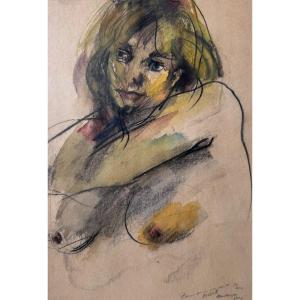

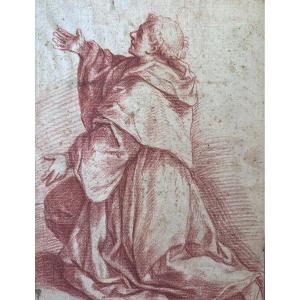
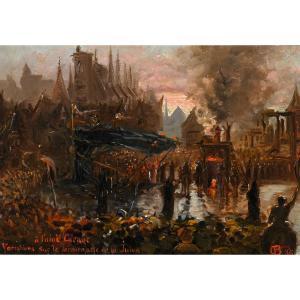
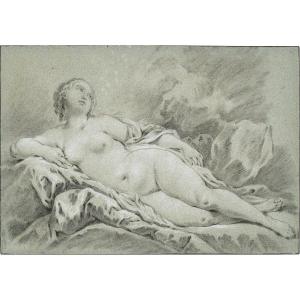




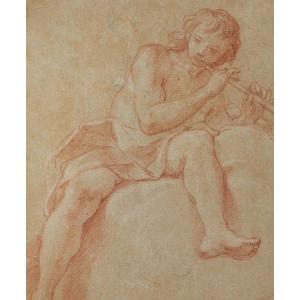
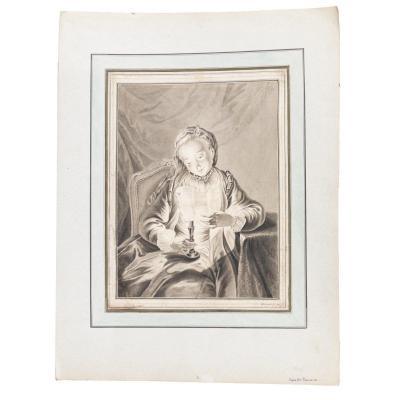

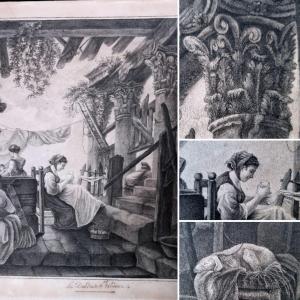
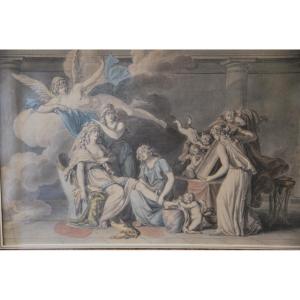




 Le Magazine de PROANTIC
Le Magazine de PROANTIC TRÉSORS Magazine
TRÉSORS Magazine Rivista Artiquariato
Rivista Artiquariato